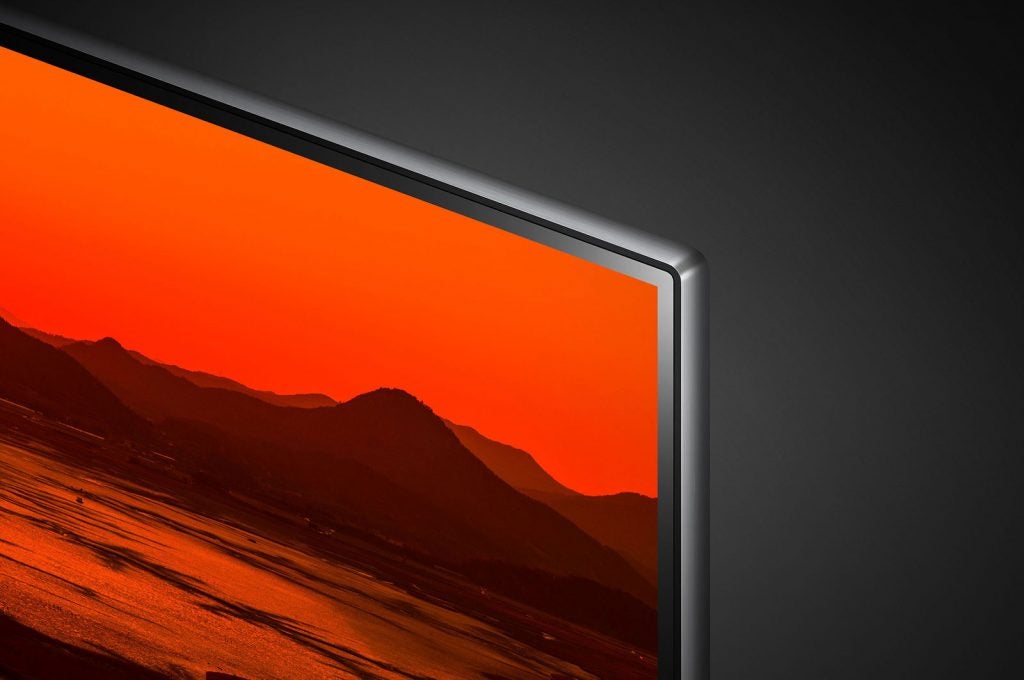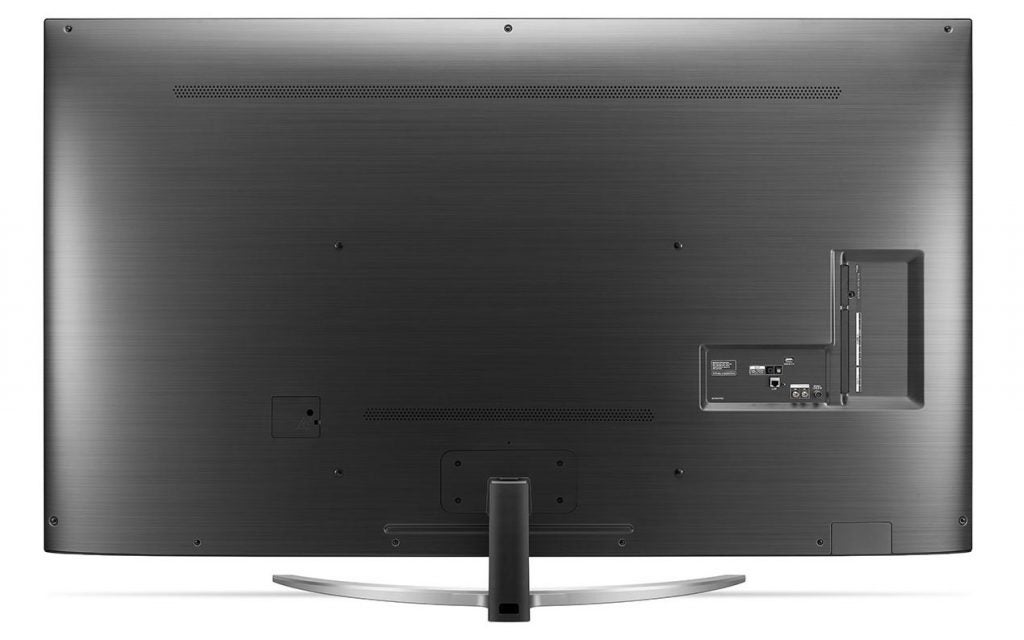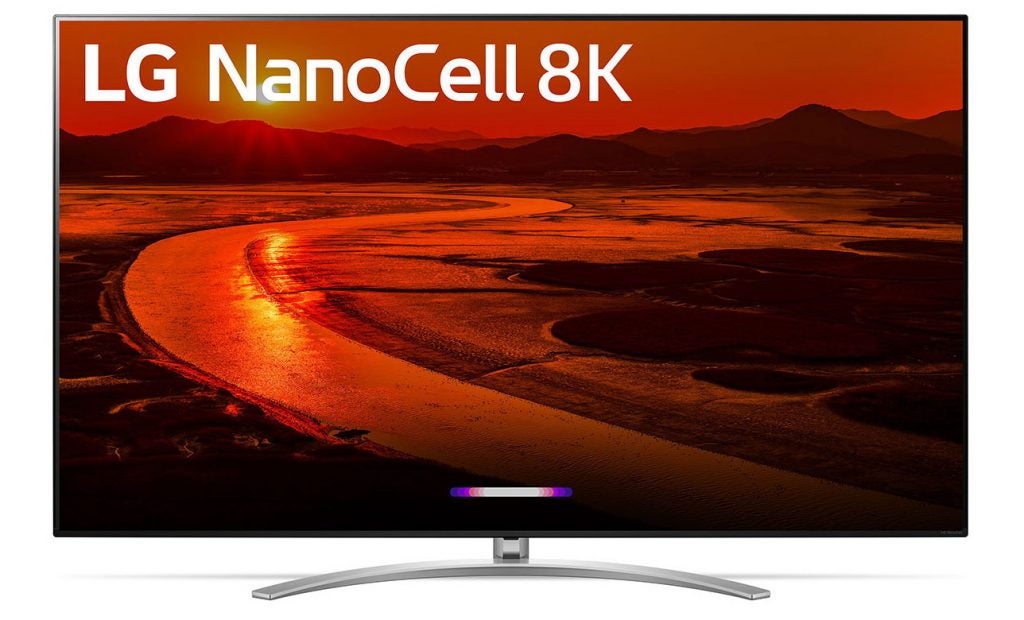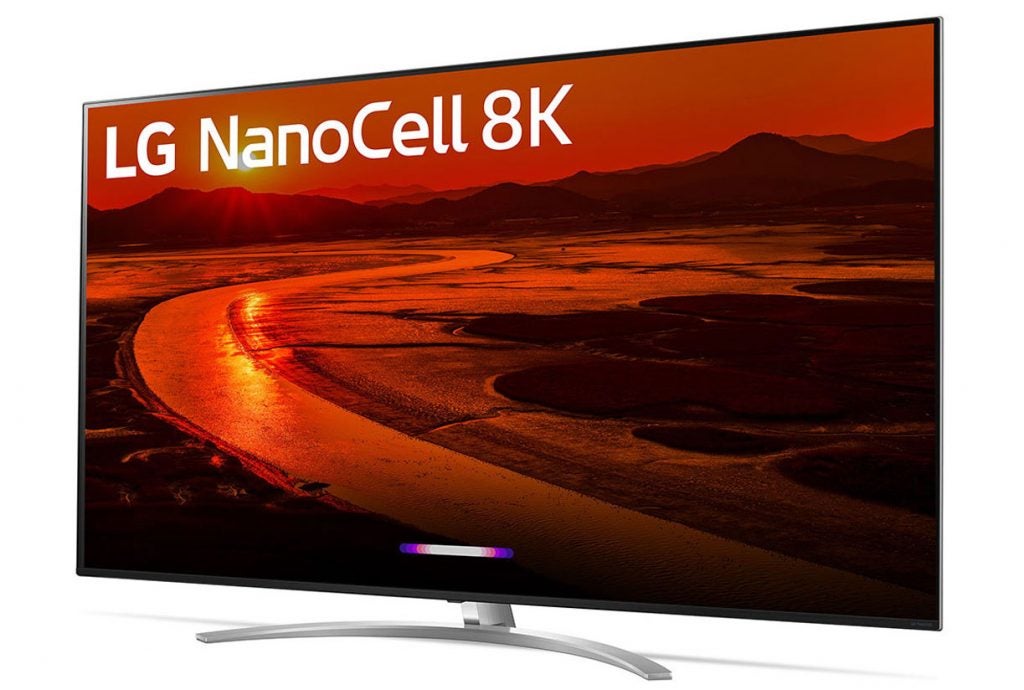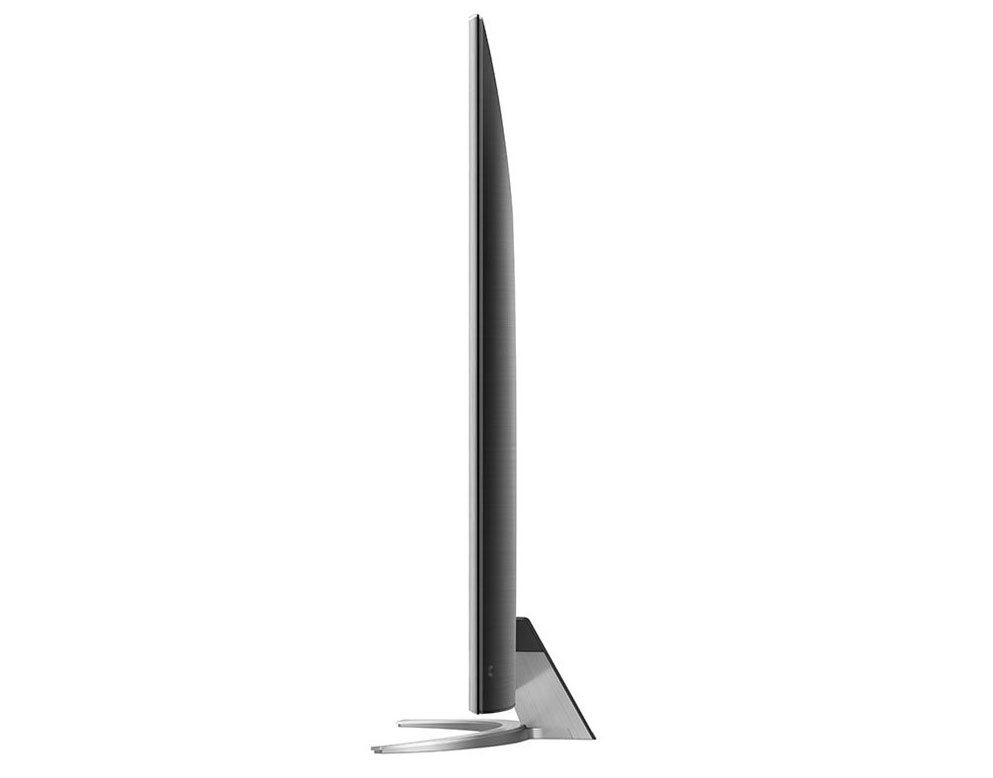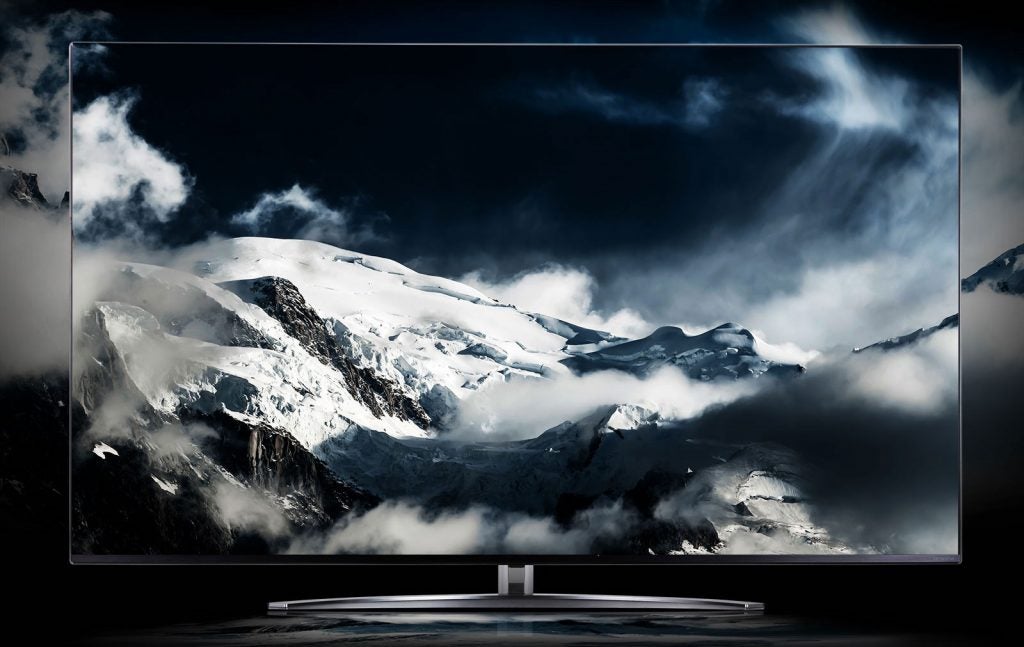LG 75SM9900 Review
LG 75SM9900 Review
The cheaper of LG's two new 8K TV options makes the most of its groundbreaking resolution, but falls down elsewhere
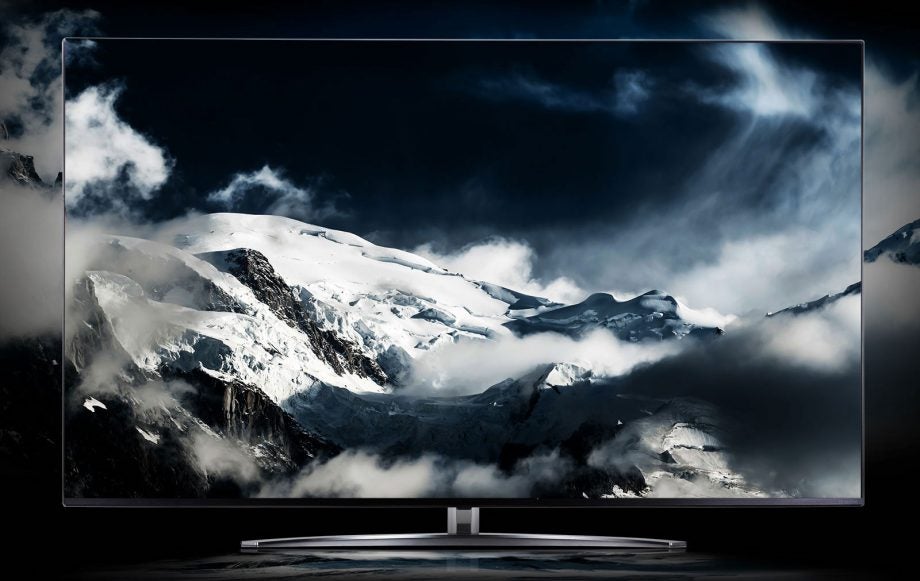
Verdict
The cheaper of LG's two new 8K TV options makes the most of its groundbreaking resolution, but falls down elsewhere
Pros
- Outstanding sharpness and detail with native 8K and upscaled 4K
- Rich, dynamic colours
- Excellent operating system
Cons
- Major backlight clouding issues
- Generally low native contrast
- Turns the backlight off during fades to black
Key Specifications
- Review Price: £5999
- Native 8K LCD TV
- WebOS smart TV system
- Nanocell colour technology
- Wide viewing angles via IPS panel
- Alpha 9 Gen 2 8K video processor
The 75-inch LG 75SM9900 is the Korean brand’s first 8K LCD TV. Priced at £5,999, it’s a much cheaper 8K option than LG’s awesome 8K OLED TV – the £29,999 OLED88Z9 – even though it gets the same 8K-optimised video processor and excellent webOS smart system as the OLED.
LG also boldly claims that the 75SM9900 delivers ‘Real 8K’ resolution when the latest 8K TVs from its great rival, Samsung, do not. Ouch. Let’s hope LG’s confidence doesn’t prove misplaced.
Related: Best TVs
LG 75SM9900 design and build quality – Attractive enough, but looks and feels plasticky
The LG 75SM9900 doesn’t really wear its cutting edge nature on its sleeve. It’s attractive enough with its narrow black frame and cute boomerang-shaped desktop stand. It doesn’t shout ‘I’m from the future’ as loudly as the stunning looking OLED88Z9 does, though.
But then I guess the 75SM9900 doesn’t have either OLED’s ability to be incredibly thin or a £30,000 budget to work with.
The LG 75SM9900 looks and feels slightly plasticky while you’re manhandling it into position in your living room. You don’t really notice this, though, when viewing the TV from a sensible viewing distance.
The main dent in the LG 75SM9900’s aesthetic appeal is its need for an external 8K decoder box. This fairly plain box needs to sit pretty near the screen and connects to it via not one but two cables, so it’s not easy to completely hide away.

The 8K decoder box you need to use
The 75SM9900’s remote control is a less premium item than the gloriously shiny and metallic one you get with the OLED88Z9. In fact, it’s just the same remote you get with LG’s 4K OLED and premium 4K LCD TVs. That doesn’t stop it being what LG calls ‘Magic’, though – meaning that you can select stuff just by pointing the remote like a magician’s wand at the right part of the screen.
This approach can occasionally be a little fiddly, but for the most part it’s a much more intuitive approach than the usual cursor-based navigation systems. Especially as the handset also features a spinning wheel at its heart to enable you to scroll quickly up and down onscreen menu lists.
LG 75SM9900 features – All the features you’d expect from an 8K TV, but as usual, no HDR10+
The LG 75SM9900’s status as the brand’s first 8K LCD is the star of the show. Especially given LG’s claims that it can provide a truer representation of 8K resolution than some rival 8K sets.
The core of LG’s argument here is that the sub-pixel manipulation techniques deployed in Samsung’s 8K TVs to get them to deliver wider viewing angles from their VA-type LCD panels leads to a reduction in resolution. The LG 75SM9900, on the other hand, uses an IPS-type of LCD panel, which helps it deliver a wide viewing angle without the need for any sub-pixel management.
Samsung argues that 8K picture quality should be judged more ‘in the round’ than purely focusing on a particular method of measuring resolution. But LG’s claims certainly got a boost recently when the Consumer Technology Association’s new definition of what constitutes an 8K TV essentially backed up LG’s assertions.
Given how keen LG is to crow about the ‘Real 8K’ credentials of its debut 8K LCD TV, the fact that it needs an external decoder box to handle most 8K content is a surprise. Without this box the TV can’t play 8K streams or USB files – even 8K stills. It could play native 8K images via its four v2.1 HDMI ports, but at the time of writing there are no external 8K sources.
What’s more, the external 8K box isn’t available until December (2019). So anyone who buys an LG 75SM9900 now have to make do until then with upscaled content.
Related: What is HDMI 2.1?
The good news is that the box will be included free with LG 75SM9900’s bought after the upgrade box’s formal launch, as well as being available as a free on-request upgrade for anyone who buys an LG 75SM9900 before the upgrade box is ready.
Even when the decoder box is ready to ship, you shouldn’t expect it to suddenly open the door to mountains of native 8K content. Native 8K video is still rarer than hen’s teeth – something to think about, perhaps, when trying to decide whether to go 8K now or stick with 4K for a bit longer.
At least the decoder box should be able to keep up via firmware updates with whatever new 8K picture quality formats might emerge in the coming months and years.
With native 8K content currently scarce, the LG 75SM9900’s upscaling of 4K and HD takes is a big deal. It’s delivered by an enhanced-for-8K version of LG’s Alpha 9 Generation 2 picture processor which, like the 8K upscalers from Sony and Samsung, used a new ‘AI’ approach to figuring out what all the millions of pixels it needs to add should look like.
Related: What is 8K?
With any LCD TV, the way its backlighting works can have a huge impact on picture quality. In the LG 75SM9900’s case, you get direct LED lighting, where the LEDs sit behind the screen rather than around its edges. There’s local dimming too, which in this case sees 112 separate zones of backlights delivering independent levels of light to suit the image at any given moment.
While this is a good backlight set up by the standards of the LCD TV world generally, it’s worth remembering that Samsung’s 8K TVs typically use more than 400 local dimming zones. And the more dimming zones a TV has, the less issues it should have – in theory – with contrast and backlight clouding.
The LG 75SM9900 uses LG’s Nanocell technology to deliver its colour. This uses uniformly sized pixels roughly a nanometer across to absorb surplus light wavelengths, leading to more precise colour filtering. For example, reds won’t be as likely to be impacted by ‘leaking’ green or blue colour elements.
Smart features on the 75SM9900 are provided by LG’s webOS system. This is as friendly as ever thanks to its cute, easy to follow and compact icon-based interface. It’s been bolstered for 2019, too, by the addition of a second tier of icons offering more direct content links to the home page, as well as a new contextual onscreen instructions system.
You can also control the TV via any of three different voice recognition systems: Google Home, Amazon Alexa and LG’s own ThinQ AI. You don’t need external listening devices to enable any of these voice recognition platforms, either.
Another new webOS feature is a Smart Home screen, from where you can monitor and manage all the compatible smart devices on your network. Including smart fridges and robot vacuum cleaners if you’re enough of a tech fiend to own such things.
Inevitably the LG 75SM9900 supports high dynamic range video. This support covers the ‘basic’ HDR10 flavour, the broadcast-friendly HLG flavour, and Dolby Vision. There is, though, no support for HDR10+ which, like Dolby Vision, adds extra scene by scene picture information to help TVs better the video stream better.
Given the role Samsung played in HDR10+’s development, it’s not exactly a shock to find LG not supporting it. But it’s still a shame it’s not there given that there are lots of HDR shows on Amazon and a growing number of 4K Blu-rays available in HDR10+ but not Dolby Vision.
At the same time, though, Samsung 8K TVs support HDR10+, but don’t support Dolby Vision. At the time of writing only Panasonic and Philips offer TVs that support both HDR10+ and Dolby Vision.
Related: Dolby Vision HDR – everything you need to know
Connections, finally, include four HDMIs, three USBs, and the now pretty much obligatory Wi-Fi and Bluetooth wireless connections.
The HDMIs are all, impressively, built to the latest v2.1 specification, meaning they can all cope with 8K feeds at up to 60Hz. Whenever such feeds might appear.
The HDMI 2.1 ports also support eARC, enabling the TV to pass lossless object-based sound formats such as Dolby Atmos and DTS:X via one of its HDMIs to a soundbar or AV receiver. Though as with most premium LG TVs these days, the LG 75SM9900 can also decode and play Dolby Atmos itself, using its own speaker system.
The HDMIs additionally support the variable refresh rate and automatic low latency mode switching features currently available via the Xbox One S and One X consoles.
LG 75SM9900 set-up – Local dimming needs to be tweaked in line with room light levels
The trickiest thing to get right about the LG 75SM9900’s set-up is its local dimming control. I’d say experiment with its different settings to see which suits your room light levels best – though I wouldn’t recommend switching it off entirely if you want the screen to deliver even slightly credible black colours.
Keep noise reduction off for native 8K and good quality 4K sources, and use either the Standard or Cinema picture presets.
The LG 75SM9900’s response time is good enough to potentially enable you to leave its motion processing switched off. Though personally, for 24fps movies at least, I preferred to set it to Custom with its blur and judder compensation elements set to three or four each. Though you could also nudge the Blur element higher and the judder element lower if you really don’t like the idea of smoothing out movie sources at all.
If you’re gaming on the LG 75SM9900, make sure you switch it into Game mode. Doing this reduces the time the screen takes to render pictures to an outstandingly quick 17ms or so.
LG 75SM9900 performance – Makes a great case for 8K, though the IPS panel suffers from backlight issues
The LG 75SM9900 does some things brilliantly, and one thing not very well at all. Let’s cover the good news first.
It typically makes a great case for the benefits 8K can bring. Native 8K pictures look dazzlingly detailed, pure, natural and direct, pretty much entirely breaking down the feeling that you’re watching a screen.
Some of this is down to the way 8K pixels are so tiny – even on a screen as big as 75 inches – that you can’t see any hint of pixel structure. Even if you sit way closer than anyone sensibly would. Some of this is also down to the way that even the narrowest lines, be they straight or curved, are immaculately defined, with no hint of jaggedness or noise.
And some of it is also down to the way the combination of exceptional detailing and essentially infinitely fine colour blends helps to create an incredibly three dimensional feel to everything. This applies to both the sense of depth and space in the image and the solidity of specific objects within it.
The really cool thing about all these 8K advantages is that you can see them from your sofa. There’s no need to perch yourself just a foot away from the screen.
It is true to say that 8K’s impact grows with every extra inch of picture it’s applied to. But the LG 75SM9900’s superb clarity proves that 75 inches is a perfectly reasonable size for 8K to be used.
The 75SM9900’s 8K talents also lend weight to LG’s claims that its 8K screens deliver a greater sense of resolution than those of its closest rival. It’s not an absolutely night and day difference, perhaps, but LG’s images do contain a little more crispness and texture. Or to put it another way, they look just a little bit more 8K.
Combining the LG 75SM9900’s immense 8K resolution with high dynamic range technology takes the sense that you’re looking at reality rather than a TV screen to an even higher level. Not least because the extra light and colour range gives all those pixels even more subtle differences to sink their teeth into. The sense of ‘3Dness’ is even more pronounced with many bright HDR shots, too (note that the TV doesn’t support actual 3D).
There’s a reason why I stressed bright HDR shots in the previous paragraph, but I’ll come back to that later.
While native 8K unlocks the full glory of the LG 75SM9900, it’s also a superb upscaler of 4K sources. Good quality 4K Blu-rays gain remarkable amounts of extra detail and texture, none of which felt forced or out of place. Sony and Samsung have both delivered superb 8K upscaling on their own 8K TVs, but with decent quality 4K sources, at least, I think LG may have bested them all.
This ability to make 4K look better than it does on most if not all native 4K TVs is a big attraction given the lack of native 8K content.
The LG 75SM9900’s upscaling is more circumspect with sub-4K sources. Essentially it puts removing noise over pushing sharpness, resulting in a pretty soft picture that makes you forget pretty comprehensively that you’re watching an 8K TV.
While this is disappointing on one level, it’s arguably a sensibly pragmatic approach. After all, there are always going to be pretty big issues associated with trying to calculate more than 90 per cent of the pixel content of the picture, as happens when converting HD to 4K.
So perhaps just going for a consistently soft but clean look isn’t such a bad call. Certainly upscaled HD and especially SD pictures are more prone to noise on Samsung’s 8K TVs – though they also look slightly sharper.
Another area of strength for the LG 75SM9900 is its colour performance. It’s been a while since I saw Nanocell technology in action, and it’s fair to say it’s come a long way. Colours look beautifully rich, bold but also refined, reminding you in no uncertain terms of the wide colour gamuts associated with HDR content.
This richness of colour holds good right into the brightest parts of the picture, too, and leaves even the colours of Samsung’s latest QLED 8K TVs looking a little wan by comparison.
The 75SM9900 doesn’t push as bright as Samsung and Sony’s 8K TVs. It measures in at around 1100 nits on a 10% white HDR window, versus more than 2000 nits on the Samsung sets and between 3000 and 4000 nits on Sony’s Z9G 8K models. But it’s bright enough to give HDR plenty of punch, especially with those bold colour saturations to keep the brightness company.
While the 75SM9900 doesn’t generally run as brightly as other 8K LCD TVs we’ve seen, it does deliver small bright parts of the picture with more intensity than Samsung’s 8K TVs. There’s none of the heavy dimming down Samsung applies to content like streetlights against night skies, or white text against a black backdrop.
Unfortunately, though, the LG 75SM9900’s backlight system lacks the control necessary to limit its brightness to the areas of the picture where it’s supposed to be. Those streetlights, for instance, also appear surrounded by large and pronounced pools of unwanted light, spreading into the night sky around them.
Put a few streetlights in such a shot, so that you get multiple patches of clouding, and the clouding becomes pretty much all you see. Especially – though not exclusively – when you’re watching HDR content.
In fact, even when it only shows up once in an image your eye is irresistibly drawn towards it, mercilessly distracting you from everything else that’s going on.
Samsung’s approach of dimming down small areas of brightness to counter the sort of blooming the LG set suffers with isn’t perfect either, to be clear – but it’s ultimately much less distracting. If LG wanted to try and keep small bright areas of the image looking bright – a perfectly honorable aim – it perhaps should have used more than 112 dimming zones.
There’s likely an issue, too, with the LG 75SM9900’s use of an IPS panel. This helps the TV deliver a wider viewing angle than other types of LCD panel, which in turn helps it get the maximum benefit from its 8K pixel count, for the reasons discussed earlier.
The downside of IPS panels, though, is that they don’t offer the same control over how much light comes through them as rival VA panels. So even if LG had used more dimming zones, while the areas of clouding might have been smaller, they would still likely have looked pretty pronounced.
The issues with IPS also prevent you from removing the backlight clouding by just turning local dimming off. Without local dimming to help it out, the screen can’t deliver anything approaching a real black colour. This leaves dark scenes looking grey and flat (especially with HDR content) and makes it hard to see much detail – 8K or otherwise – through the mist.
Clearly aware of the 75SM9900’s contrast problems, LG has its backlight essentially just switch off completely when there’s a fade to black. This does, of course, enable the screen to deliver a true black colour. But you can clearly see when the backlight off/on switches are triggered, which once again provides a painful reminder that you’re watching a TV rather than just enjoying a film or TV show.
This feels especially hard to take on an 8K TV, given that 8K’s biggest attraction – as impressively demonstrated by the LG 75SM9900, actually, during bright images and scenes – is the way it feels like you’re looking at the real world, not a TV picture.
The LG 75SM9900’s 40W speaker system is more consistently effective than its pictures. So long, anyway, as you use LG’s AI Sound system, which does a brilliant job of ‘mapping’ all types of content sound to the maximum capabilities of the built-in speakers.
Play a Dolby Atmos film into the LG 75SM9900, for instance, and the AI mode delivers it with much more volume, room filling presence and dynamism than the strangely restrained default Dolby Atmos sound setting.
The speakers are less prone to distortions and buzzing interference with the AI mode active too – again, presumably, because LG’s engineers know more about those speakers’ limits than the Dolby-designed Dolby Atmos audio preset.
The AI mode can occasionally sound a bit too aggressive. For the most part, it turns what would otherwise only have been a fairly average sound performance into a pretty good one.
Related: What is Dolby Atmos?
Should you buy an LG 75SM9900?
LG’s 8K LCD debutante certainly has a few things going for it. Its colour performance is excellent, and bright 8K and upscaled 4K images pictures look incredibly detailed and lifelike. In these two respects, in fact, its 8K and upscaled 4K pictures outperform those of rival Samsung’s latest 8K TVs.
The quality of the LG 75SM9900’s 4K upscaling takes some of the sting out of the current lack of native 8K content, too. Though at the same time there’s not as yet any sign of large amounts of native 8K content waiting in the wings.
The LG 75SM9900 also sounds decent with its AI mode active too, and while £6,000 isn’t cheap, it’s only a fifth as expensive as LG’s OLED88Z9 8K OLED TV.
Unfortunately, though, the LG 75SM9900’s inability to control its backlight all too often pulls the rug out from under all the great picture work being done elsewhere.
Verdict
While the LG 75SM9900 can look dazzlingly good with bright 8K and 4K pictures, it tends to fall apart when there’s any dark stuff to handle.
And sadly, whenever this happens (and it actually happens quite a lot) its 8K resolution becomes pretty much irrelevant, and that six grand price tag starts to look way too high.
How we test televisions
We test every TV we review thoroughly over an extended period of time. We use industry standard tests to compare features properly. We’ll always tell you what we find. We never, ever, accept money to review a product.


